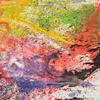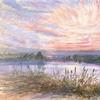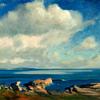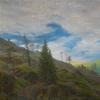Stanford art and art history faculty, staff making plans for the new McMurtry Building
- STANFROD, California
- /
- July 14, 2015

Designed by Diller Scofidio + Renfro, the new interdisciplinary arts hub is expected to house a hive of activity
Stanford's art and art history faculty and staff are spending the summer moving to the arts district. The McMurtry Building, the new home for the Department of Art & Art History, will welcome students the first day of the fall term and be formally dedicated Oct. 6. The Art & Architecture Library opens in early September.
Designed by Diller Scofidio + Renfro, along with the executive architect Boora Architects, the 100,000-square-foot space elegantly unites the making and studying of art under one roof, and presents multiple opportunities for exhibitions, performance and programs.
The Department of Art & Art History intends to increase course offerings in art practice by 35 percent in the new building over the next two years. Studios and classrooms are being outfitted with new equipment before the students arrive, including 3-D scanners and printers, laser-cutting technology, a CNC router and digital printmaking technology.
Art history and film studies classes will benefit from the latest high-end digital projectors in all classrooms and a 45-seat screening room. Two staff members will be added to support the expanded technological capacity and exhibition spaces.
Expanded art-making space in the new building addresses student demand. Additional spaces include a second digital media studio and a digital darkroom, a print lab, a tinker lab, a sound recording studio and larger studios overall. New storage solutions allow for multiple painting and drawing classes in each studio in a given term.
Another feature of the McMurtry Building is the Oshman Presentation Space, a 125-seat flexible interior room on the first floor that can serve as a lecture classroom with retractable seats, a performance space with acoustical walls or a presentation space for work in various media, along with a sculpture studio and dedicated screening rooms. Facing east, the glass garage-style door of the Oshman can open for outdoor performances or close to accommodate presentations or lectures. The door opens to a lawn shared with the Cantor Arts Center to create a potential space for programmatic interaction between the buildings. Located adjacent to the Rodin Sculpture Garden, this dynamic space presents the opportunity for art practice outside the McMurtry Building's walls.
"The McMurtry Building allows us to imagine new and different ways of teaching," said Nancy J. Troy, the current chair of the Department of Art & Art History. "Now, we and our students have an opportunity to rethink customary practices. The design features of the space encourage all of us to engage with one another in new and intensive ways, enhancing our methods, scholarship and creative processes."
Visitors to campus are welcome to explore the public exhibition spaces on the ground floor of the McMurtry Building – the Penny & Jim Coulter Art Gallery, the Moghadam Family Gallery Arcade and adjacent Gunn Foyer – and enjoy food and beverages at C2 The Fetter Family Café. While classrooms and studios throughout the building are not open to the public, there are accessible and stunning views from the roof garden.
The Department of Art & Art History will continue to manage the Stanford Art Gallery on Lasuen Mall that is free and open to the public Tuesday through Sunday, 11 a.m. to 6 p.m.
Hub and hiveThe new facility, and all of its state-of-the-art equipment and innovative spaces, supports the Department of Art & Art History's diverse programs and teaching missions for both undergraduate and graduate students. The vision for the building was developed with the leadership of the faculty, together with the office of the dean of the School of Humanities and Sciences, and Stanford University Libraries & Academic Information Resources.
Students of art practice – which includes design, digital media, drawing, painting, photography, printmaking and sculpture – and Stanford's Film & Media Studies Program, which includes documentary filmmaking and film studies, will work alongside their peers in art history.
Located next to the Cantor Arts Center and the Anderson Collection at Stanford University, the McMurtry Building is porous and inviting, with a number of entryways to encourage informal engagement with the arts. Its location in the arts district creates opportunities for students to work with, and be inspired by, the unparalleled art collections found next door.
"The department's new home in the McMurtry Building will give us a chance to expand our teaching in many ways, but we will remain focused on giving our students something harder to define, more difficult to quantify, namely, a lifelong dream and realization of what it is to study art, to make art, to think about art," said Alexander Nemerov, the Carl and Marilynn Thoma Provostial Professor in the Arts and Humanities and the incoming chair of the Department of Art & Art History.
Special student programs and projects will be presented in the opening year, including the second annual undergraduate exhibition that moves from the Stanford Art Gallery to McMurtry's Penny & Jim Coulter Art Gallery. Other inaugural year happenings include Anthony McCall's temporary art installation Leaving (with Two-Minute Silence), a video-light work in the Oshman Oct. 5–16. The installation consists of two parallel projected digital videos, produced with music by composer David Grubbs. Also, Nighthouse Studio, an artist collaborative founded by Elaine Buckholtz (MFA '07) and Flor van de Velde, will create a light and sound installation in the atrium in the spring.
Art historian Steven Ostrow, sculptor Ursula von Rydingsvard, New Yorker theater critic Hilton Als, film scholar Thomas Elsaesser and writer Rebecca Solnit are on the growing roster of guest lecturers during the inaugural year.
Several interdisciplinary faculty projects supported by the Stanford Arts Institute's campus-wide programming grants are already scheduled for the inaugural year, with more to be announced in the fall. Among them isBuilding Scene: Dance, Architecture, Fashion and Voice, created by Aleta Hayes in the Dance Division of the Department of Theater and Performance Studies. Taking place in the fall, it is a peripatetic performance installation using dance, original vocal music, movement and sculptural costumes to highlight different aspects of the new building.
Two spring 2016 faculty projects taking place in the Oshman are Words and Images to End All Wars andCollision. Rush Rehm in the Department of Theater and Performance Studies presents Words and Images to End All Wars, a staged reading with free public performances that is part of an ongoing campus-wide commemoration of the centenary of World War I.
Combining poetry and fiction with visual images (painting, etchings, sculpture photography and film stills), the performances will explore the Great War via significant artistic responses to it.
Lochlann Jain in the Department of Anthropology presents Collision. This project brings together anthropologists and performing artists in a 15-week investigation of violence, combining research methods from both fields, resulting in a site-specific, audience-interactive performance.
"The new McMurtry Building will further the interdisciplinary investigation of the arts to which Stanford is committed," said Matthew Tiews, associate dean for the advancement of the arts. "We believe the arts are a necessary part of a well-rounded education. They stimulate analysis and problem-solving, as well as providing a means for self-expression and connection with the university community. We're very grateful to Burt and Deedee McMurtry, whose extraordinary gift has given life to this pioneering space. I'm confident the McMurtry Building will foster deeply enriching experiences for students and faculty in the Department of Art & Art History and from across the campus."











100x100_c.jpg)




